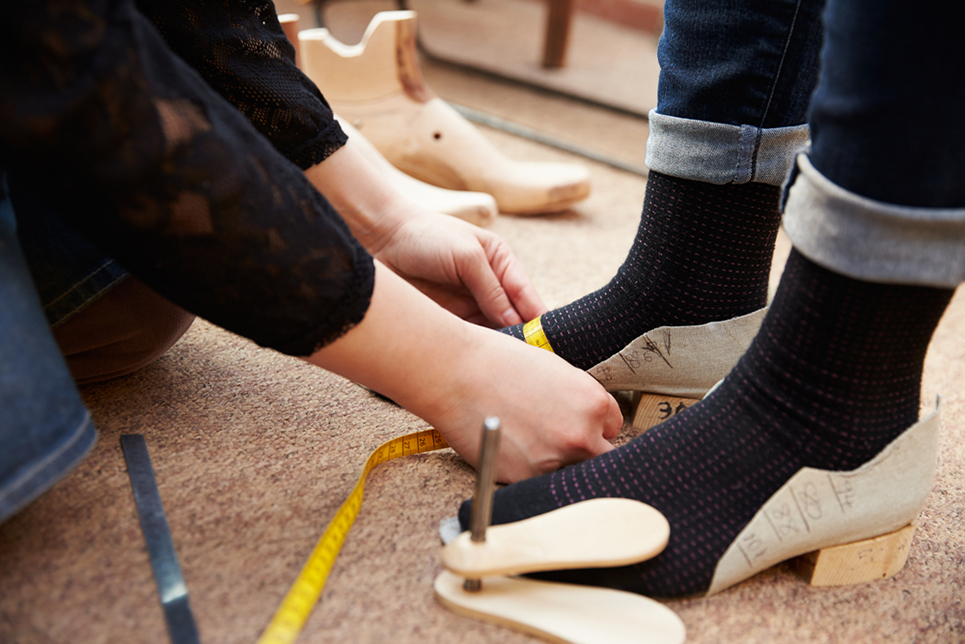Whether for a special occasion, fun night out, or simply to gain a boost of confidence, many enjoy the appeal of wearing elevator shoes. However, finding a pair that fits well and feels comfortable can be challenging – especially for those with wider feet. As someone with a wide forefoot herself, the author understands the struggle firsthand. More often than not, off-the-rack options are simply too narrow, causing pain, rubbing, and slipping within the first hours of wear.
The good news is that with some diligent research and awareness of foot shape specifics, it is absolutely possible to locate elevator shoes that work beautifully for wider feet. This guide aims to share expert tips and personal experiences to help any reader looking to spice up their wardrobe with a little extra height find pairs that fit like a dream.
Measure your feet accurately

Proper measurement is essential for finding well-fitting elevator shoes. Begin by using a Brannock device or printing the Brannock sizing chart to have on hand. Having the recipient stand with heels together and against the sizer provides an accurate reading in both US men’s and women’s sizes. Be sure to measure both feet, even if you think they are the same size, as many individuals have slightly differently sized feet.
Next, make notes not just of overall length but also where the foot is widest. Is it at the ball, arch, or toes? Taking these width measurements will help when comparing to shoe specifications. It’s also a good idea to measure later in the day as feet tend to swell with daily use. And remember, while dress shoe sizes may align with your measurements, width and brands can vary so taking the time to try shoes on is most reliable.
Consider your widest part of the foot

Knowing whether your foot is wider at the ball, arch or toes makes a big difference in choosing an appropriately shaped shoe. Those with width primarily at the ball of the foot, typically around the ball of the foot metatarsal bones, will want to look for shoes with roomier toe boxes. A slightly rounded or almond shaped toe rather than sharply pointed helps accommodate this area. Wider feet through the arch may prefer shoes featuring goring or elastic inserts for flex. And if the width is concentrated towards the toes, a shoe with space above that area is most comfortable. Paying attention to your unique foot shape helps the search enormously.
Shop for extra width sizes
Most established shoe brands that offer elevator styles will have both standard and wide width options available. Look specifically for medium (M) and wide (W) sizing. Extra wide (XW) may be needed for very narrow standard shoes. Checking manufacturer sizing guides is important, as some consider anything over a C width to be wide. Don’t be afraid to size up either, as many find slipping less than ideal. Try varying widths if possible to ensure correct fit.
Try different heel styles
Heel shape matters enormously for wide foot comfort. Those with width concentrated in the forefoot may do best avoiding skinny stacked styles in favor of almond toes with more sturdy wedge shapes that won’t put pressure on problem areas. Lacing all the way up provides security while slip-on loafers risk rubbing. Pointed toes tend to create unattractive squeeze at the sides as well. Experiment with options and notice which general heel silhouettes feel most forgiving on wider feet. Browse customer reviews too for real-world wear test feedback on various brands and profiles. Comfort over fashion is key, so focus shape selection there.
Look for expandable features

Shoe flexibility is key for providing a comfortable fit for wider feet. Some features to look out for include elastic inserts in the goring or sides that allow adjusting the shoe volume as needed throughout the day. Removable insoles provide another way to customize fit – some wearers may prefer aftermarket insoles for more room, while others find sizing up is alleviated with just the stock insoles taken out.
Materials also contribute to a shoe’s ability to stretch. Smooth leather and fabrics like Lycra tend to mold more to the foot over time compared to rigid synthetics or embossed patterns. Nubuck and suede are also often more accommodating than stiff leather or vinyl. Laces that run all the way up the shoe rather than goring alone provide more security and capacity for micro-adjustments.
Consider specialty retailers
When seeking out elevator shoes designed with wider feet in mind, specialty retailers can prove invaluable. Stores focused on hard-to-fit sizes have likely encountered all types of foot shapes and thus carry a more extensive selection of widths. They may also offer services like custom fittings and special orders to ensure a perfect fit.
Chamaripa has a Wide With Shoe Collection, also, we provide Custom Service. We can customize the heel height, width, color, logo, etc. of the shoes according to your special needs. Free to contact us for your any needs!


